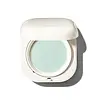What's inside
What's inside
 Key Ingredients
Key Ingredients

 Benefits
Benefits

 Concerns
Concerns

 Ingredients Side-by-side
Ingredients Side-by-side

Silica
AbrasiveCaprylic/Capric Triglyceride
MaskingDimethicone/Vinyl Dimethicone Crosspolymer
Skin ConditioningMethicone
EmollientWater
Skin ConditioningChamomilla Recutita Flower Water
MaskingEthylhexylglycerin
Skin ConditioningGlyceryl Caprylate
EmollientButylene Glycol
HumectantMentha Arvensis Leaf Extract
MaskingDipotassium Glycyrrhizate
Humectant1,2-Hexanediol
Skin ConditioningHydrolyzed Hyaluronic Acid
HumectantHydrolyzed Corn Starch
HumectantPinus Densiflora Leaf Extract
AntimicrobialTocopherol
AntioxidantDisodium EDTA
Silica, Caprylic/Capric Triglyceride, Dimethicone/Vinyl Dimethicone Crosspolymer, Methicone, Water, Chamomilla Recutita Flower Water, Ethylhexylglycerin, Glyceryl Caprylate, Butylene Glycol, Mentha Arvensis Leaf Extract, Dipotassium Glycyrrhizate, 1,2-Hexanediol, Hydrolyzed Hyaluronic Acid, Hydrolyzed Corn Starch, Pinus Densiflora Leaf Extract, Tocopherol, Disodium EDTA
Mica
Cosmetic ColorantSynthetic Fluorphlogopite
Silica
AbrasiveDimethicone
EmollientMacadamia Ternifolia Seed Oil
EmollientHdi/PPG/Polycaprolactone Crosspolymer
Magnesium Myristate
Glycerin
HumectantIsopropyl Palmitate
EmollientMoringa Oleifera Seed Oil
EmollientButyrospermum Parkii Butter
Skin ConditioningEnantia Chlorantha Bark Extract
Skin ConditioningPearl Extract
AntioxidantCandida Bombicola/Glucose/Methyl Rapeseedate Ferment
AntimicrobialDiamond Powder
AbrasiveTriethoxycaprylylsilane
Pentylene Glycol
Skin ConditioningPolysorbate 20
EmulsifyingOctyldodecyl Stearoyl Stearate
EmollientAcrylamide/Sodium Acryloyldimethyltaurate Copolymer
Emulsion StabilisingHydrogen Dimethicone
Magnesium Aluminum Silicate
AbsorbentSorbitan Olivate
EmulsifyingSorbitan Stearate
EmulsifyingIsohexadecane
EmollientEthylhexylglycerin
Skin ConditioningPolysorbate 80
EmulsifyingSorbitan Oleate
EmulsifyingPolymethylsilsesquioxane
Butylene Glycol
HumectantPropylene Glycol
HumectantOctyldodecanol
EmollientTocopherol
AntioxidantCeramide NP
Skin ConditioningPhytosphingosine
Skin ConditioningHydrogenated Lecithin
EmulsifyingGlycine Soja Sterols
EmollientOleanolic Acid
Skin ConditioningOleyl Alcohol
EmollientSodium Dehydroacetate
PreservativePhenoxyethanol
PreservativePotassium Sorbate
PreservativeParfum
MaskingMica, Synthetic Fluorphlogopite, Silica, Dimethicone, Macadamia Ternifolia Seed Oil, Hdi/PPG/Polycaprolactone Crosspolymer, Magnesium Myristate, Glycerin, Isopropyl Palmitate, Moringa Oleifera Seed Oil, Butyrospermum Parkii Butter, Enantia Chlorantha Bark Extract, Pearl Extract, Candida Bombicola/Glucose/Methyl Rapeseedate Ferment, Diamond Powder, Triethoxycaprylylsilane, Pentylene Glycol, Polysorbate 20, Octyldodecyl Stearoyl Stearate, Acrylamide/Sodium Acryloyldimethyltaurate Copolymer, Hydrogen Dimethicone, Magnesium Aluminum Silicate, Sorbitan Olivate, Sorbitan Stearate, Isohexadecane, Ethylhexylglycerin, Polysorbate 80, Sorbitan Oleate, Polymethylsilsesquioxane, Butylene Glycol, Propylene Glycol, Octyldodecanol, Tocopherol, Ceramide NP, Phytosphingosine, Hydrogenated Lecithin, Glycine Soja Sterols, Oleanolic Acid, Oleyl Alcohol, Sodium Dehydroacetate, Phenoxyethanol, Potassium Sorbate, Parfum
 Reviews
Reviews

Ingredients Explained
These ingredients are found in both products.
Ingredients higher up in an ingredient list are typically present in a larger amount.
Butylene Glycol (or BG) is used within cosmetic products for a few different reasons:
Overall, Butylene Glycol is a safe and well-rounded ingredient that works well with other ingredients.
Though this ingredient works well with most skin types, some people with sensitive skin may experience a reaction such as allergic rashes, closed comedones, or itchiness.
Learn more about Butylene GlycolEthylhexylglycerin (we can't pronounce this either) is commonly used as a preservative and skin softener. It is derived from glyceryl.
You might see Ethylhexylglycerin often paired with other preservatives such as phenoxyethanol. Ethylhexylglycerin has been found to increase the effectiveness of these other preservatives.
Silica, also known as silicon dioxide, is a naturally occurring mineral. It is used as a fine, spherical, and porous powder in cosmetics.
Though it has exfoliant properties, the function of silica varies depending on the product.
The unique structure of silica enhances the spreadability and adds smoothness, making it a great texture enhancer.
It is also used as an active carrier, emulsifier, and mattifier due to its ability to absorb excess oil.
In some products, tiny microneedles called spicules are made from silica or hydrolyzed sponge. When you rub them in, they lightly polish away dead skin layers and enhance the penetration of active ingredients.
Learn more about SilicaTocopherol (also known as Vitamin E) is a common antioxidant used to help protect the skin from free-radicals and strengthen the skin barrier. It's also fat soluble - this means our skin is great at absorbing it.
Vitamin E also helps keep your natural skin lipids healthy. Your lipid skin barrier naturally consists of lipids, ceramides, and fatty acids. Vitamin E offers extra protection for your skin’s lipid barrier, keeping your skin healthy and nourished.
Another benefit is a bit of UV protection. Vitamin E helps reduce the damage caused by UVB rays. (It should not replace your sunscreen). Combining it with Vitamin C can decrease sunburned cells and hyperpigmentation after UV exposure.
You might have noticed Vitamin E + C often paired together. This is because it is great at stabilizing Vitamin C. Using the two together helps increase the effectiveness of both ingredients.
There are often claims that Vitamin E can reduce/prevent scarring, but these claims haven't been confirmed by scientific research.
Learn more about Tocopherol